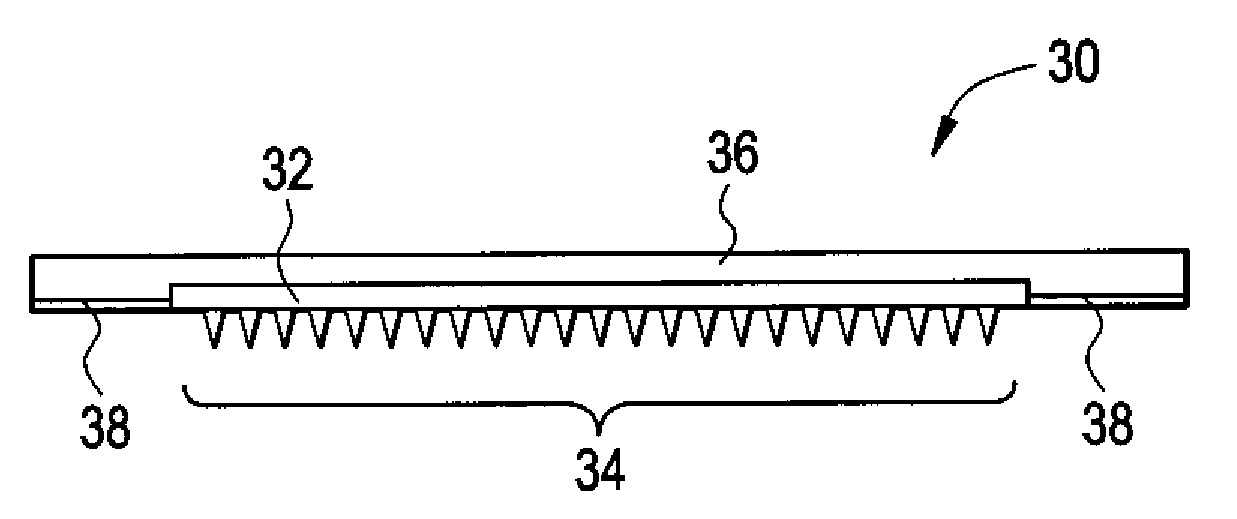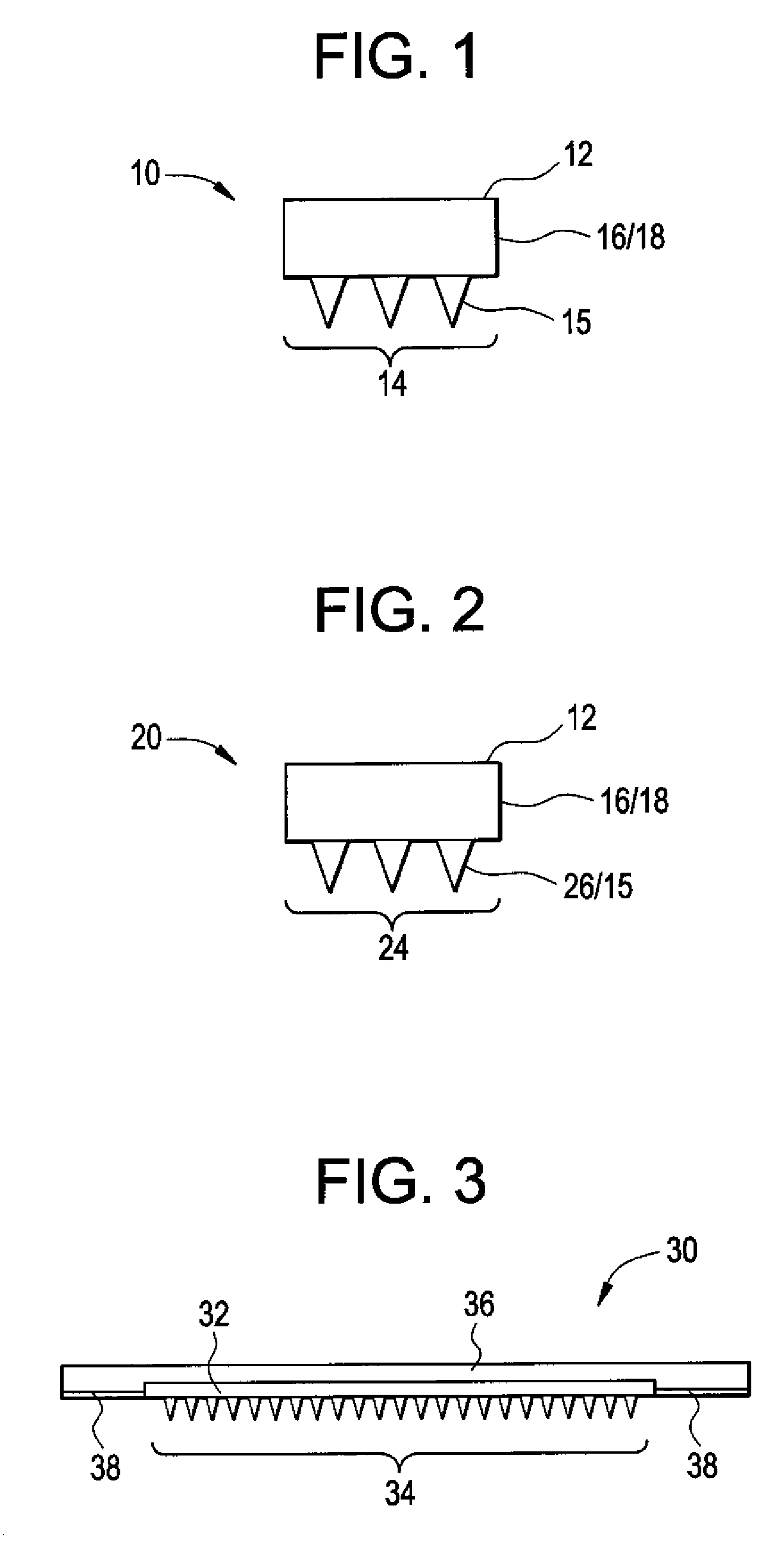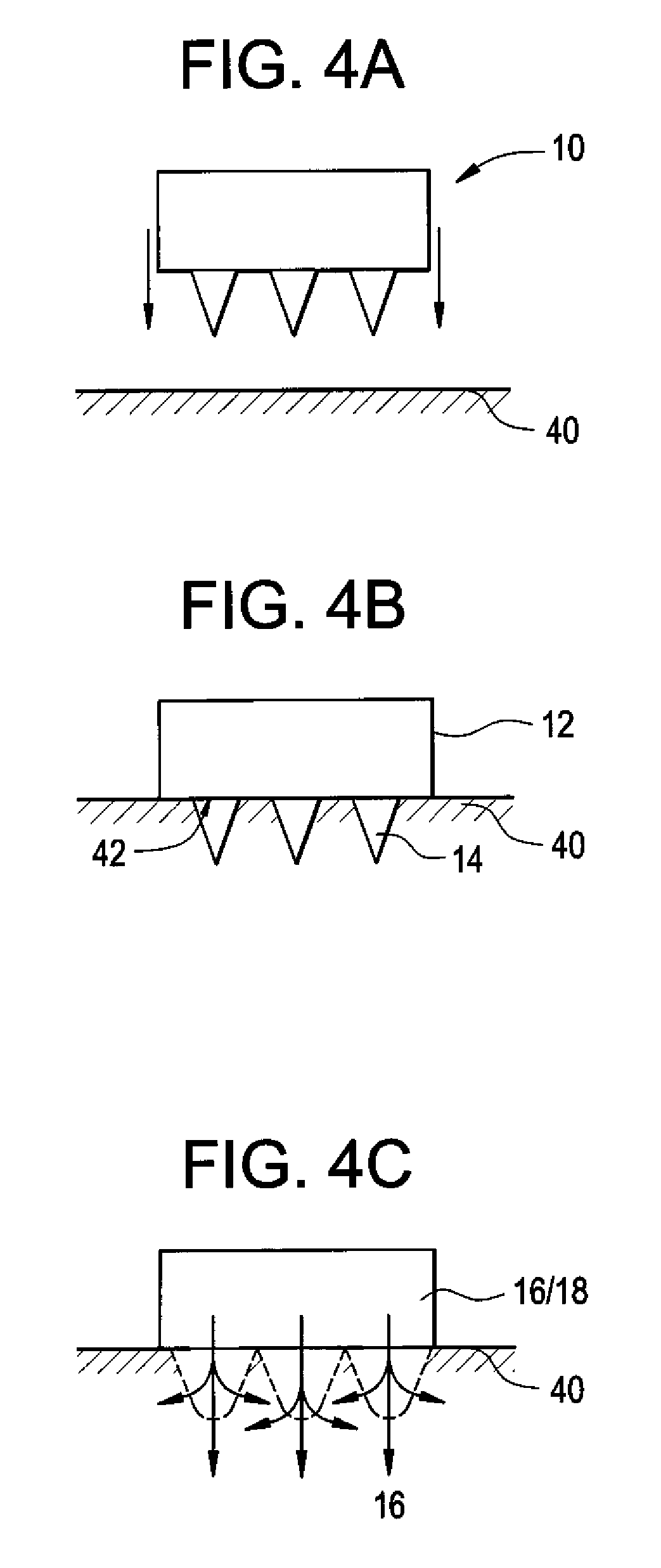Microneedle Devices and Methods of Drug Delivery or Fluid Withdrawal
a technology of microneedle and fluid withdrawal, which is applied in the direction of infusion needles, other medical devices, other domestic articles, etc., can solve the problems of limited development of transdermal delivery devices, limited amount, and effective and efficient use of these drugs
- Summary
- Abstract
- Description
- Claims
- Application Information
AI Technical Summary
Benefits of technology
Problems solved by technology
Method used
Image
Examples
example 1
Fabrication of Dissolvable Microneedles
[0096]Microneedle master structures were made using lithographic and etching techniques adapted from the microelectronics industry that are well known to those in the art. Carboxymethyl cellulose (CMC) microneedles were then fabricated using a centrifuge casting method at room temperature, as illustrated in FIG. 6.
[0097]The CMC was hydrated to form a viscous hydrogel which was placed on the surface of a mold and spun in a centrifuge at a temperature from about 25 to 40° C. The centrifugal force drove the CMC solution into the microneedle cavities in the mold. While continuing to spin the molds at elevated temperature, the water was dried from the CMC solution, leaving behind solid CMC microneedles. A model drug, sulforhodamine B fluorescent dye, was added to the viscous CMC solution and was thereby incorporated into the microneedles and into the base substrate for sustained delivery. Alternatively, the molds were filled with a solution of CMC a...
example 2
Drug Delivery with Dissolvable Microneedles
[0099]The CMC microneedles made in Example 1 were inserted by hand into full-thickness swine skin affixed to a flat surface. After fixing and sectioning, sites of microneedle insertion and drug release were imaged by brightfield and fluorescence microscopy. To quantify delivery rates, in vitro tests were performed with Franz cells containing human cadaver epidermis pierced with microneedles. Model drug release was measured by spectrofluorometry.
[0100]The CMC microneedles dissolved within 5 minutes after insertion into the swine skin. Brightfield imaging of histological sections showed the sites of microneedles insertion as an indented skin surface with a breached stratum corneum and a hole penetrating across the epidermis. Fluorescence microscopy showed intense sulforhodamine release at the sites of needle insertion. It is anticipated that if these experiments were conducted in vivo, a release in this manner near the dermal-epidermal juncti...
example 3
Design and Fabrication of Microneedles by Molding
[0103]Four materials-related criteria to make microneedles for self-administration of biotherapeutics from a minimally invasive patch were considered: (1) gentle fabrication to avoid damaging sensitive biomolecules, (2) sufficient mechanical strength for insertion into skin, (3) controlled release for bolus and sustained drug delivery, and (4) rapid dissolution of microneedles made of safe materials. Guided by these criteria, two polysaccharides—i.e., carboxymethylcellulose and amylopectin—were selected because they are biocompatible materials with a history of use in FDA-approval parenteral formulations, are expected to be mechanically strong due to their relatively high Young's modulus, and are highly water soluble for rapid dissolution in the skin.
Fabrication of Micromolds
[0104]Dissolving microneedles were fabricated using a micromolding approach that faithfully reproduces microneedle structures in an economical manner suitable for...
PUM
| Property | Measurement | Unit |
|---|---|---|
| width | aaaaa | aaaaa |
| width | aaaaa | aaaaa |
| width | aaaaa | aaaaa |
Abstract
Description
Claims
Application Information
 Login to View More
Login to View More - R&D
- Intellectual Property
- Life Sciences
- Materials
- Tech Scout
- Unparalleled Data Quality
- Higher Quality Content
- 60% Fewer Hallucinations
Browse by: Latest US Patents, China's latest patents, Technical Efficacy Thesaurus, Application Domain, Technology Topic, Popular Technical Reports.
© 2025 PatSnap. All rights reserved.Legal|Privacy policy|Modern Slavery Act Transparency Statement|Sitemap|About US| Contact US: help@patsnap.com



